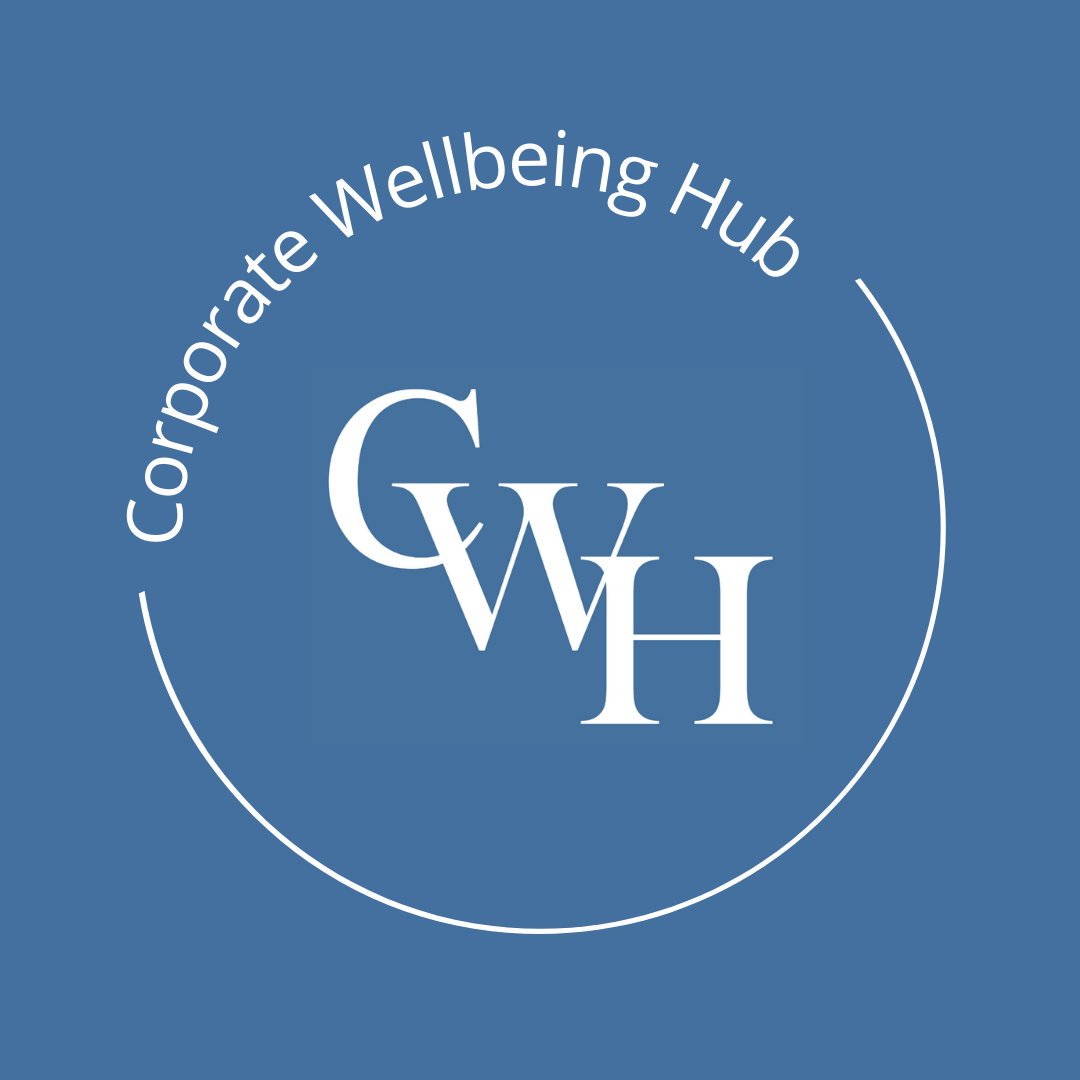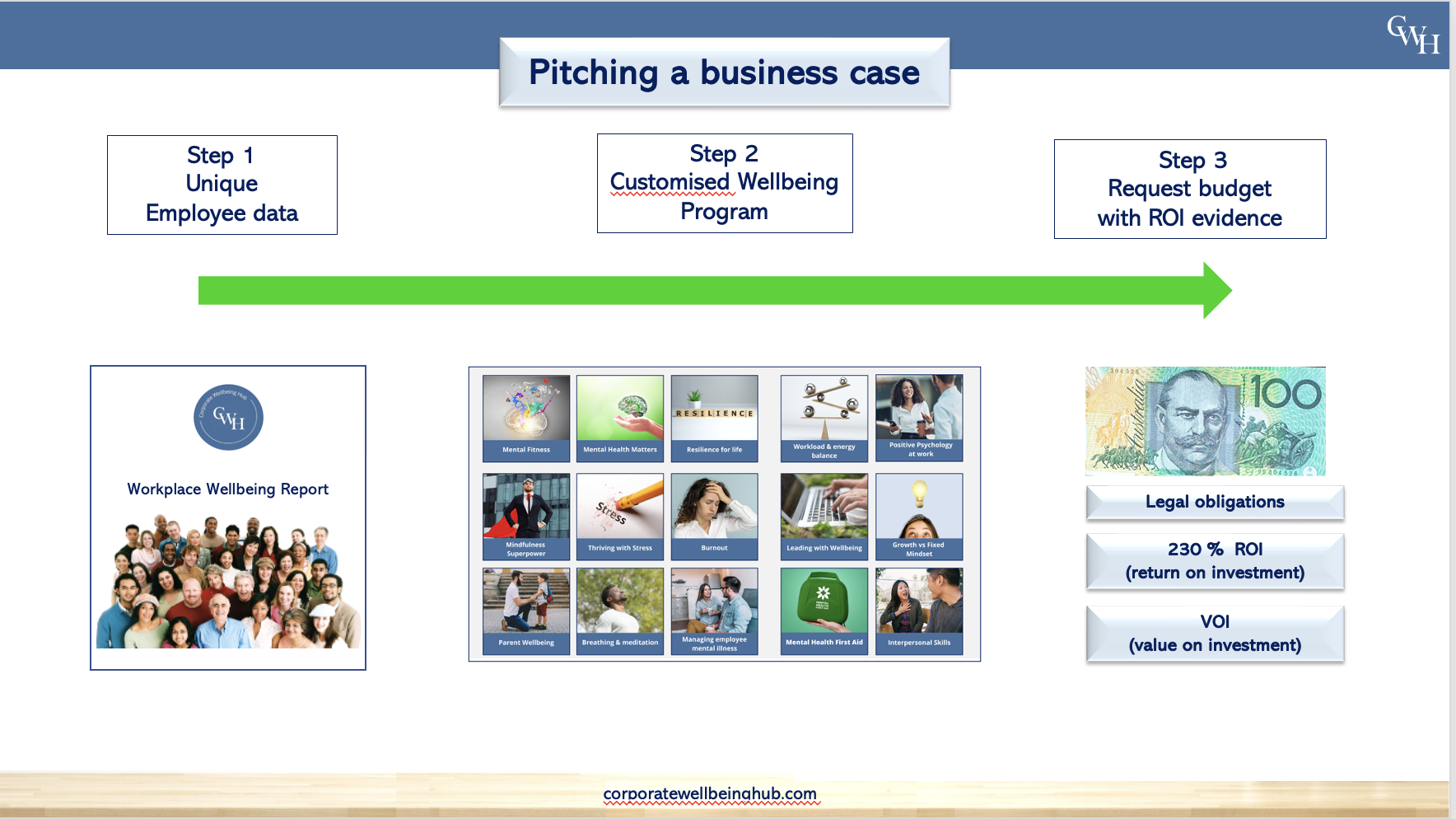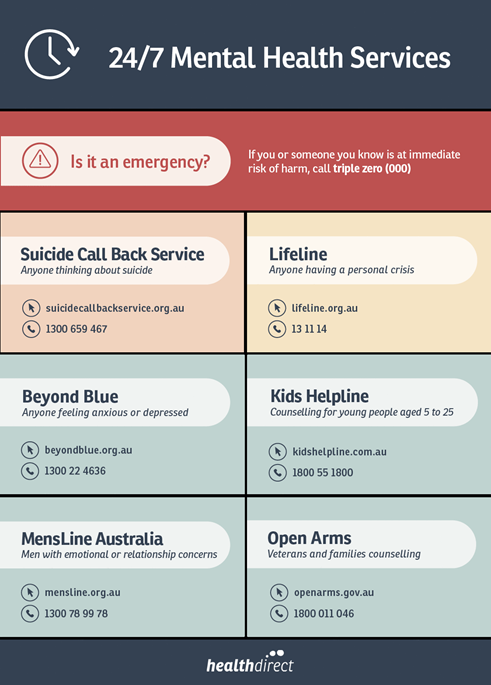Wellbeing Resources
Why is wellbeing important? What are the outcomes, ROI, VOI and legal obligations?
Here is a one page snapshot summary to show your executive team why employee wellbeing is so important.
Psychosocial risk audits and mental health at work
Are you facing an uphill battle trying to get exec level buy in for your psychosocial risk audit? I am hearing this a lot from WHS and Wellbeing leads.
Here are 3 reasons to invest in mental health in your workplace:
1. Legal Obligations - you must comply with the SafeWork Australia Code of Practice - Managing Psychosocial hazards at work. Here is the link: https://www.safeworkaustralia.gov.au/doc/model-code-practice-managing-psychosocial-hazards-work
2. ROI - 230% is a pretty convincing number! This comes from reduced sick leave and workers comp claims a well as increased productivity. https://www.headsup.org.au/healthy-workplaces/why-it-matters
3. VOI - the value this equates to the organisation is in improved attraction and retention of high quality employees. Every Australian business needs this right now. Scroll down to read the corporate pitch - a strong business case.
Need a bit more help? Book a free coaching call…
Corporate Pitches - a strong business case
In most businesses, we need approval from a CEO, executive team or board to start a Wellbeing program. It is easier than ever to build a proposal with a sound business case. There is a plethora of research and statistics showing that in Australia we have a growing need for Wellbeing in the workplace.
When you are pitching a business case, we recommend you present to your executive team in this order…
Here are is unique employee data showing the risks, wants and needs of our people.
Here is the wellbeing program we have developed to specifically address these needs.
It will cost $X. Our organisation will receive a return of investment of a minimum of $2.30 for every #1 we invest.
Here is a visual of how to pitch…
We have brought the key pieces of evidence together in one place for you. Here is a list of evidence-based stats for your pitch…
Legal Obligations
Managing psychosocial hazards at work is now a legal obligation for organisations in Australia. Follow the Model Code of Practice: Managing psychosocial hazards at work at www.safeworkaustralia.gov.au/doc/model-code-practice-managing-psychosocial-hazards-work. The steps include identifying the hazards, assessing the risks, controlling the risks and reviewing and maintaining.
Additionally, employers must make reasonable adjustments for a worker with a mental health condition, must create physically and mentally safe workplaces and must maintain the privacy of an employee’s mental health condition. (Disability Discrimination Act 1992, Australian WHS legislation, Privacy Act 1988).
Understanding your obligations as an employer and an employee is important for your business and for the safety of your individuals. Having a mental health strategic plan in place is a great place to start.
2. Mental Health Conditions Prevalence
1 in 5 workers is currently experiencing a mental health condition. (ABS, 2008)
45 % of Australians will experience a mental health condition in their lifetime (ABS, 2008)
Having the skills to start a conversation with anyone living with a mental health condition can change a life.
3. Risk factors in the workplace
5 million of Australia’s 7.9 million full-time employees put in more than 40 hours every week, with 1.6 million racking up more than 50 working hours. (ABS, 2017)
Anxiety and depression are the most common mental health conditions experienced by people in Australia, and tend to affect people during their prime working years (16 to 64 years). (ABS, 2008)
Knowing the risk factors of mental health can help you make small changes at work that could make a big difference to an individual.
4. ROI & VOI
Is the ROI (return on investment) really strong?
Every dollar you spend creating a mentally healthy workplace can, on average, result in a positive return on investment (ROI) of $2.30. (PWC)
3/4 of Australian employees say a mentally healthy workplace is important when looking for a job. (BeyondBlue, 2014)
What about VOI (value of investment)?
Organisations with a positive approach to mental health and safety have increased productivity, improved worker engagement and are better able to recruit and retain talented people. (Beyond Blue, 2014)
Organisations also have reduced absenteeism, risk of conflict, grievances, turnover, disability injury rates and performance or morale problems. (CAN, 2013)
5. Outcomes
A healthy and connected workforce produces a potential return on investment of less turnover, less absenteeism, greater satisfaction in employment, better recruitment, and sustained success of companies.
Additionally, it has a two-fold positive effect on employee productivity through both job motivation and capability.
Safeguard your most precious assets, your people, because healthy people create healthy business. Johnson & Johnson estimated a return of $2.71 for every dollar spent on wellness programs.
Need a bit more support to pitch your program? Book a coaching call…
Workplace Wellbeing Assessments
Workplace Wellbeing Assessments are surveys ready to send out to all of your employees. You get the survey link, wellbeing report and wellbeing action plan.
Health & Wellbeing Calendar Dates
Wellbeing Champion Expression of Interest Template
Health & Wellbeing links
Mental Health Month October
Look Up, Look Out & Look Forward! Look after your mental health Australia! 10th Oct is World Mental Health Day.
National Nutrition Week
Try for 5. - that’s 5 serves of veg every day. Get more veg in your life.
24/7 Mental Health Services
If you are in an emergency, or at immediate risk of harm to yourself or others, please contact emergency services on 000.
Lifeline 13 11 14
Suicide Call Back Service 1300 659 467
Kids Helpline 1800 551 800
A free, private and confidential, telephone and online counselling for young people aged between 5 and 25.
Mensline Australia 1300 78 99 89
A telephone and online support, information and referral service, helping men to deal with relationship problems in a practical and effective way.
Q Life 180 184 527 3pm-12am www.qlife.org.au
QLife is Australia’s first nationally-oriented counselling and referral service for LGBTI people.
Headspace 1800 650 890
Free online and telephone service that supports young people aged between 12 and 25 and their families going through a tough time.









